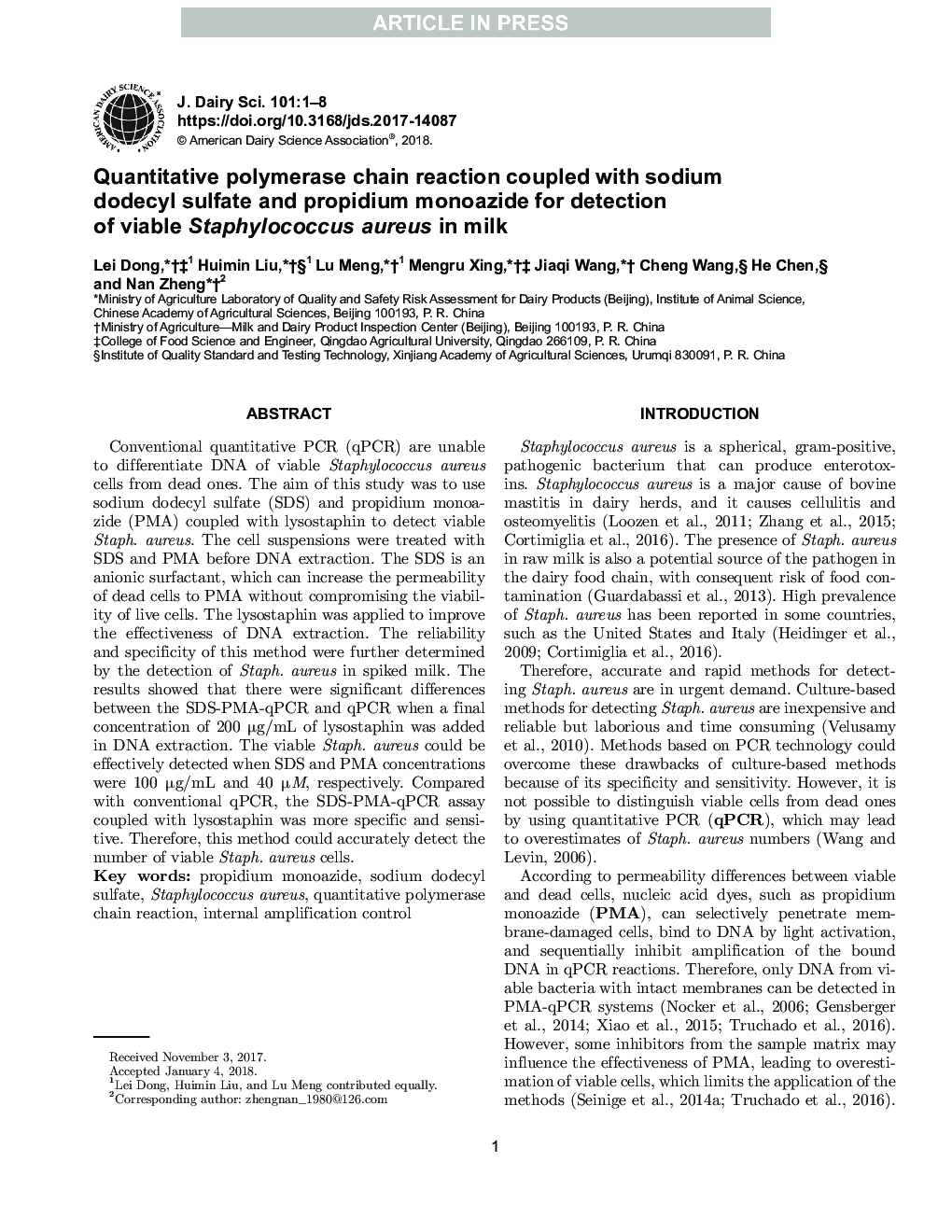| Article ID | Journal | Published Year | Pages | File Type |
|---|---|---|---|---|
| 8501071 | Journal of Dairy Science | 2018 | 8 Pages |
Abstract
Conventional quantitative PCR (qPCR) are unable to differentiate DNA of viable Staphylococcus aureus cells from dead ones. The aim of this study was to use sodium dodecyl sulfate (SDS) and propidium monoazide (PMA) coupled with lysostaphin to detect viable Staph. aureus. The cell suspensions were treated with SDS and PMA before DNA extraction. The SDS is an anionic surfactant, which can increase the permeability of dead cells to PMA without compromising the viability of live cells. The lysostaphin was applied to improve the effectiveness of DNA extraction. The reliability and specificity of this method were further determined by the detection of Staph. aureus in spiked milk. The results showed that there were significant differences between the SDS-PMA-qPCR and qPCR when a final concentration of 200 μg/mL of lysostaphin was added in DNA extraction. The viable Staph. aureus could be effectively detected when SDS and PMA concentrations were 100 µg/mL and 40 μM, respectively. Compared with conventional qPCR, the SDS-PMA-qPCR assay coupled with lysostaphin was more specific and sensitive. Therefore, this method could accurately detect the number of viable Staph. aureus cells.
Keywords
Related Topics
Life Sciences
Agricultural and Biological Sciences
Animal Science and Zoology
Authors
Lei Dong, Huimin Liu, Lu Meng, Mengru Xing, Jiaqi Wang, Cheng Wang, He Chen, Nan Zheng,
